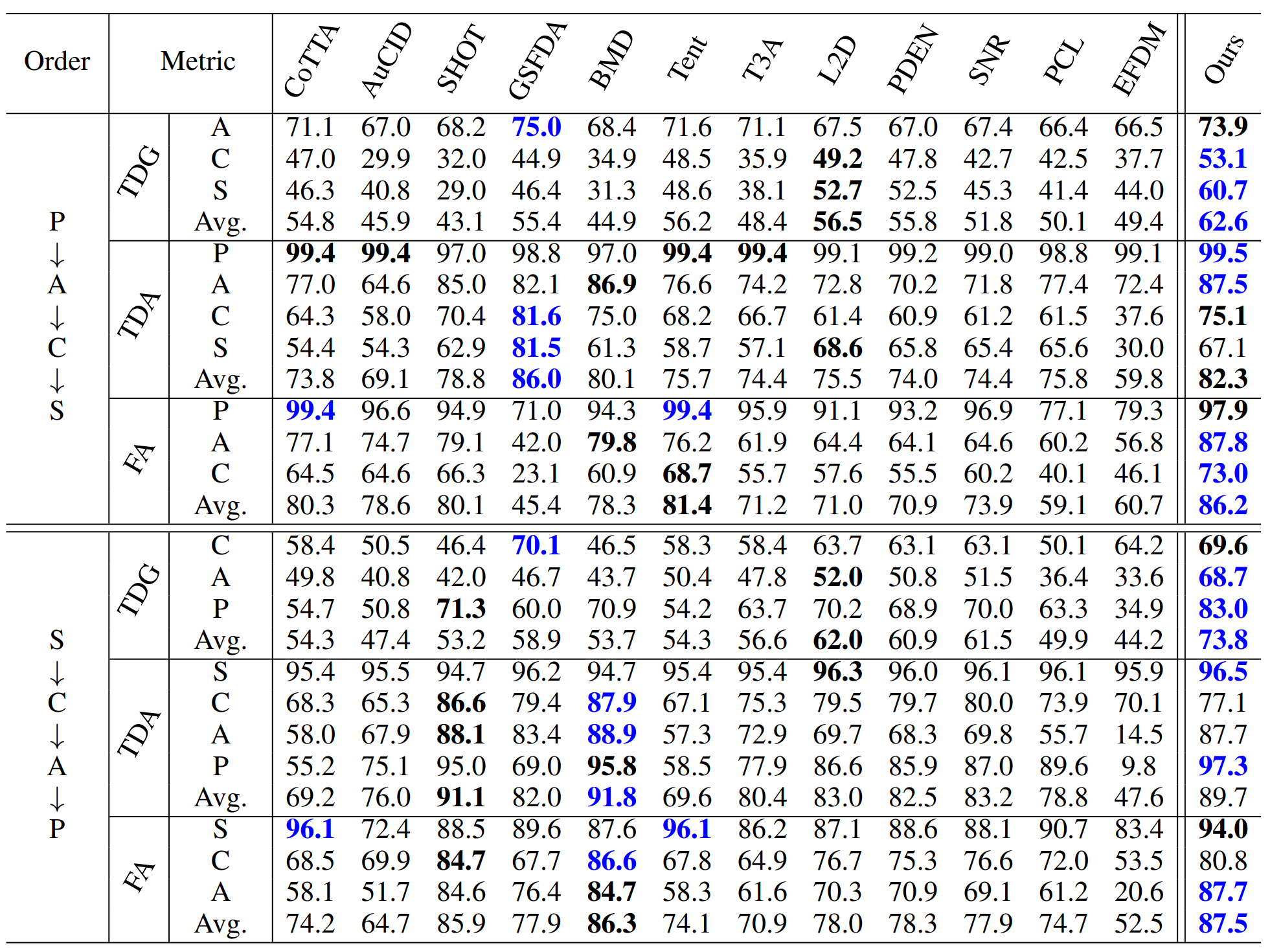Official Implementation for ICLR 2023 paper: Deja Vu: Continual Model Generalization for Unseen Domains

RaTP first starts with a labeled source domain, applies RandMix on the full set of source data to generate augmentation data, and uses a simplified version of PCA for model optimization. Then, for continually arriving target domains, RaTP uses T2PL to generate pseudo labels for all unlabeled samples, applies RandMix on a top subset of these samples based on their softmax confidence, and optimizes the model by PCA.
pytorch==1.11.0
torchvision==0.12.0
numpy==1.20.3
sklearn==0.24.2
Download Digit-Five and PACS from https://github.com/jindongwang/transferlearning/tree/master/code/DeepDG. Rename them as dg5 and PACS and place them in ./Dataset.
Download the subset of DomainNet used in our paper from https://drive.google.com/file/d/1LDnU3el-nHoqTgnvxEZP_PxdbdBapNKP/view?usp=sharing, and place it in ./Dataset.
After installing all dependency packages, you can use the following command to run the code on PACS
python main.py --gpu $gpu_id --order 2 0 1 3 --seed 2022 \
--aug_tau 0.5 --topk_alpha 20 --lr 0.005 --MPCL_alpha 0.5 \
--output result_mainpaper
Please run all bash files in scripts with the following command.
cd ./scripts
bash PACS.sh dg5.sh subdomain_net.sh
The visualization of results will be saved in result_* (you can customize the file name) after training. The following table reports the experiment results of running RaTP on PACS.

@article{liu2023deja,
title={DEJA VU: Continual Model Generalization For Unseen Domains},
author={Liu, Chenxi and Wang, Lixu and Lyu, Lingjuan and Sun, Chen and Wang, Xiao and Zhu, Qi},
journal={arXiv preprint arXiv:2301.10418},
year={2023}
}
If you have any questions regarding the code, please feel free to contact Lixu Wang (lixuwang2025@u.northwestern.edu) or Lingjuan Lyu (Lingjuan.Lv@sony.com).